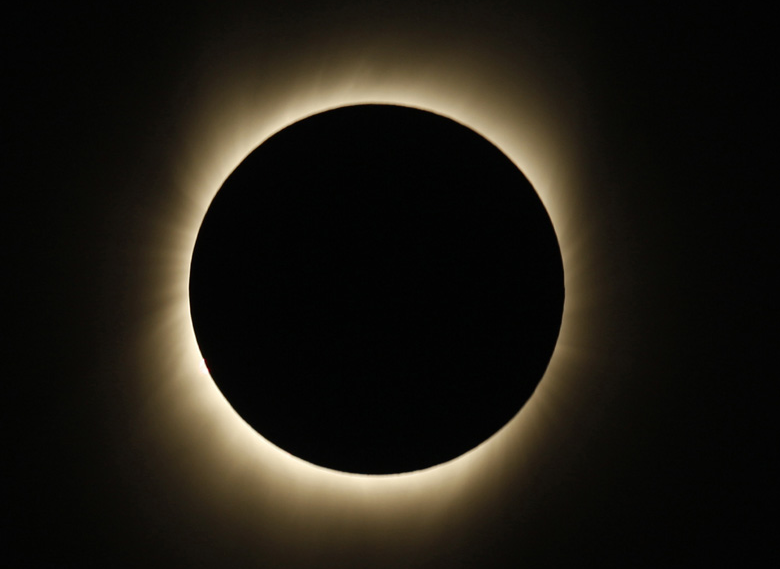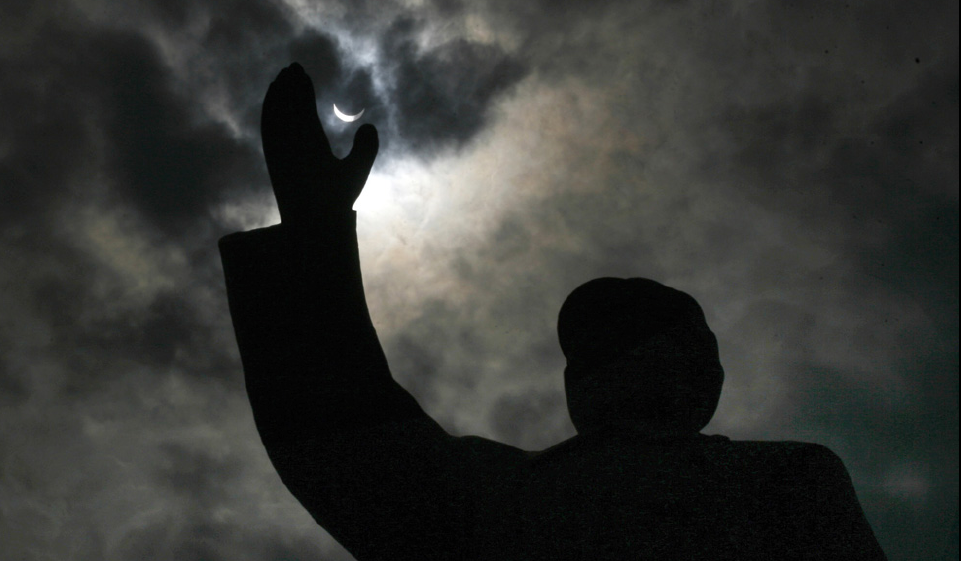A total eclipse of the sun is a rare phenomenon. In ancient times it was understood to be an omen or portent. Herodutus reports that an eclipse halted a battle between the Lydians and Medes, noting that “when they saw the onset of night during the day …[t]hey stopped fighting, and both sides became eager to have peace.” Would that it had the same effect in contemporary times. Superstitions of one sort or another continue, of course, particularly in tribal and polytheistic cultures, but from the perspective of the so-called “modern” world an eclipse is a natural event that manifests what we might call the “sublime,” an awe-inspiring spectacle, simultaneously beautiful and foreboding; as a sublime object a total eclipse commands our attention even as we know that looking at it directly is forbidden lest we risk losing our sight altogether. And more to the point, we almost always take the dare.
There was a total eclipse of the sun that crossed nearly half of the earth last week, cutting across most of East Asia from India to China and lasting for nearly seven minutes And we looked. Not directly, of course, but through various media that filtered our vision. Those in the direct path of the eclipse relied on indirect projection, smoked glass, exposed slide film or x-rays, and all other variety of solar filters. The rest of us have had to rely on photographic representations such as those available at The Big Picture to satisfy the desire to look at the forbidden object.
Viewing an eclipse through a camera’s lens or a view finder can be no less dangerous than unmediated observation (and maybe more so to the extent that it telescopes and magnifies the view), but that doesn’t seem to have deterred the various photographers who alternately took pictures of people viewing the eclipse and pictures of the eclipse itself. Interestingly enough, pictures of the eclipse are divided into two categories, those that feature various stages of the eclipse itself without any external reference points (as with the photograph above) and those that locate the eclipse against the silhouette of various cultural backgrounds, such as in a statue of Chairman Mao in Hubei Province.
Such photographs are interesting allegories for the naturalizing mystique of photography itself: a technology that presumes to separate the viewer from the thing viewed at a safe distance, even as it creates the illusion of being there. So we can presume to view (and in viewing to experience the “beauty” and “pleasure” of) a solar eclipse—or other manifestations of the sublime such as wars and catastrophes—without the risk of wound or demise. Of course here the silhouette of culture against nature emphasizes the illusion and thus reminds us of the real distance from the thing we are viewing, both physically and technologically. What we need to remember is that photographs don’t always foreground their artifice, and therein lies the true risk in what we dare to see.
Photo Credits: Saurabh Das/AP Photo; Stringer/Reuters


Discussion